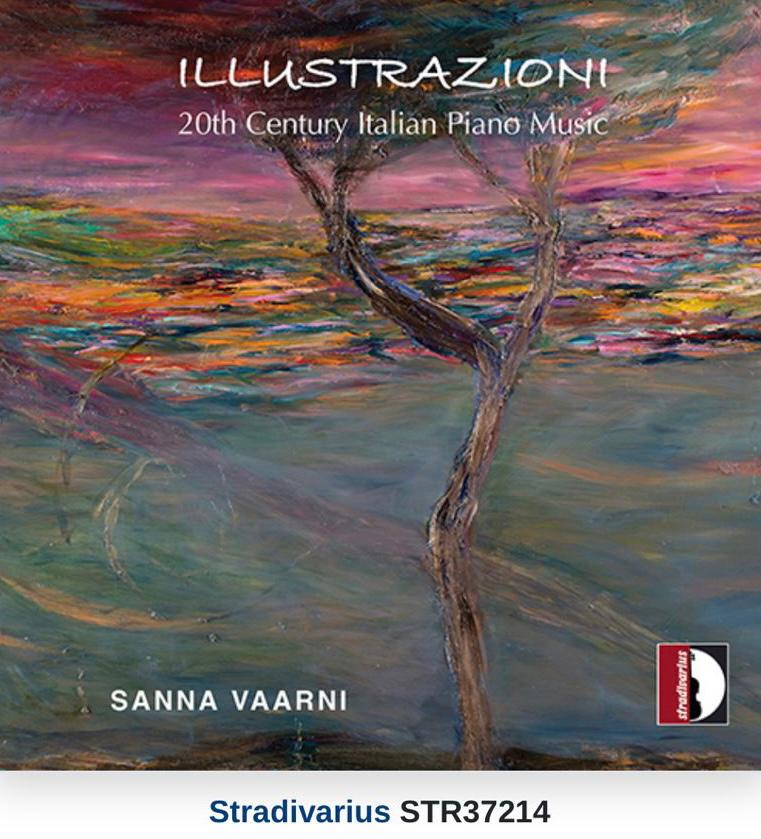I love nothing more than inspired performances and intelligent programming. And that is exactly what Finnish pianist Sanna Vaarni has provided for listeners here: a well-played program featuring the music of Italian composers ranging from 1916 all the way up to 1964. Beginning with two inspired works by Mario Castelnuovo-Tedesco – his harmonically ambiguous and impressionistically inspired Il raggio verde, op. 9, and his mysterious (at times Spanish) sounding Cipressi, op. 17. In just these two works, Vaarni already displays a wealth of imagination and good taste in how she carefully shapes and distinguishes these works from each other: the darker hues of the first versus the more sensual, mellifluous patterns of the second. Her sound is often orchestral in quality without ever becoming harsh in sound. A lovely performance of Scelsi’s spiky and modernistic 1935 Capriccio per pianoforte follows. Vaarni’s careful attention to details of articulation – never too dry, always rounded – lends the music a pleasant and at times even lush quality, all within the more modernistic and anguished landscape of the work, making for a nice contrast with Malipiero’s altogether more Impressionistic and dreamier suite of pieces that follow, his Risonanze. Dallapiccola’s Quaderno musicale di Annalibera comprises 11 small tonal pictures or impressions based on a varied inspirations – shadows, colors, friezes, etc. They are short works that often show off the composer’s love and use of the dodecaphonic style of composition. But don’t let that scare one off! They are as musically satisfying as any of the other works on this recital. Next up is Nino Rota’s playful and spontaneous sounding 15 Preludi. Rota is best known as a composer of the cinema, but these pieces – perhaps feeding of his work in that genre – are as vividly descriptive and evocative as anything he wrote for film: they are true pianistic tone pictures. And the final work of this recital? Scelsi’s Quattro illustrazioni sulle metamorfosi di Vishnu, the heaviest and most outwardly dissonant works on the recital, but all in the most musically satisfying way, particularly with Vaarni’s gorgeous tone, her astute layering of dynamic and textural elements and, once again, her careful attention to matters of pianistic color and articulation. This is music that for too long has gone vastly underexplored and underplayed. Hopefully these captivating readings of this charming and evocative music will bring it the attention it deserves – by both audiences and performers alike. But for now, if one loves this music or wants to explore it further, one would be hard pressed to find a better guide and better performances of these works than those here.
#Recommended ! © 2023 #Fanfare Scott Noriega
